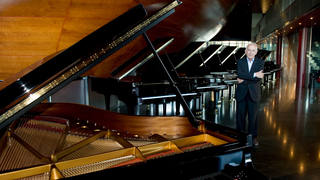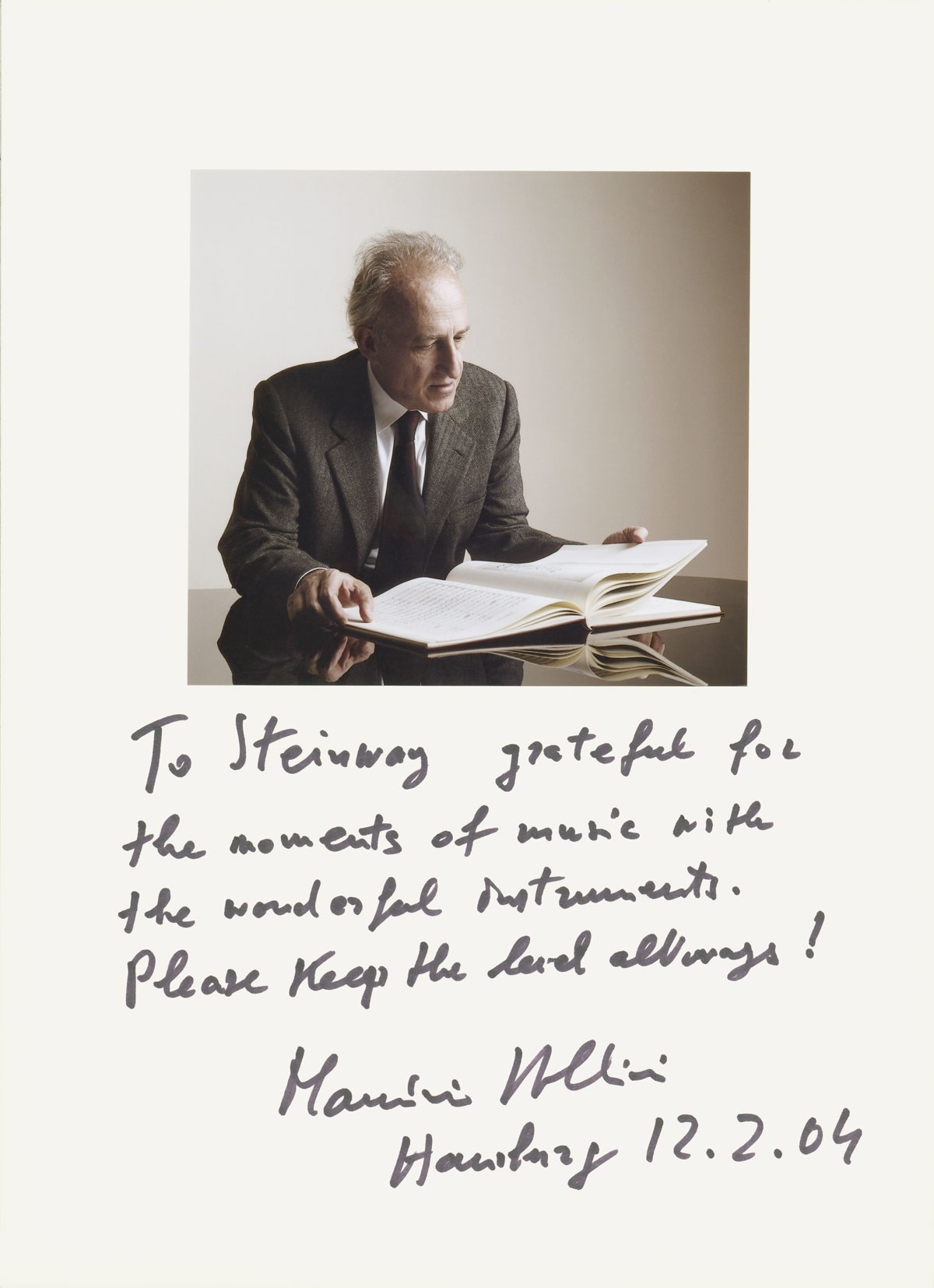
Remembering Maurizio Pollini
(1942–2024)
The music world is in mourning. It is a different world without Maurizio Pollini. For ages he was a gem of the piano and always will be. At Steinway, we summarize this in a single word: Immortal. We miss him.
Many obituaries have reported on his life and career. So here is a piece on the relationship between Pollini and Steinway & Sons. The partnership was an unbreakable one. But that doesn’t mean it was free of complications. Like all pianists, Pollini longed for the ideal instrument. He had very clear ideas about how his grand piano should be, at concerts, recordings and at home.
Since every Steinway is unique, the question of the ideal instrument was always asked anew. In this respect, it was not only an honor to work with the maestro, but also a recurring new challenge. Pollini's ideas and demands were high! His motivation was not vanity, but responsibility. He was concerned with the music, and meeting the expectation of composers and audience. He was a cautious artist, sometimes scrupulous and often doubting for a long time before the optimal solution was found. We had the utmost respect for his approach and kept ourselves prepared with time, flexibility, empathy — and also strong espresso!
Pollini's wishes as to how his grand piano should feel and sound in concert were already reflected in the positioning of the instrument on stage, which required a great deal of attention and time. When he came to the Laeiszhalle in Hamburg, for example, we placed the grand piano exactly where the optimal position had already been determined years before: the right foot of the grand piano stood on the seventh row of wood on the stage floor at that time and the lid support was exactly at the height of seat 16 of the stalls.
Everything was always in place when he arrived — but calibration was always needed. The grand piano was moved several times at small intervals, sometimes only 10 centimeters forward, sideways and backwards, and the sound in the hall was always checked. In the end, the Steinway was usually back in its original position... This procedure was a typical and necessary preparation for Pollini and gave him confidence for the concert evening. Transcendant moments often had such a preparation.
While he was sometimes tense, he could also be serene. 2010 was the year of Chopin's 200th birthday and the 50th anniversary of Pollini's victory in the Warsaw Chopin Competition. Against this backdrop, Steinway set up a Maurizio Pollini edition of Model B grand pianos, which the maestro himself had selected and signed on the golden cast plate. Part of the proceeds went towards financing a Steinway Model B for the National Chopin Institute in Warsaw. The project had led to the launch of his career — and he never forgot it. Pollini’s schedule did not allow him to travel to the Steinway Factory in Hamburg to select the grand pianos.
He was focused on a recital in honor of Pierre Boulez at the Culture and Convention Center Lucerne / Kultur- und Kongresszentrum Luzern (KKL). So if he couldn't come to us, we would come to him. We transported ten Steinway Model B grand pianos to Lucerne. The KKL gave us the foyer for the selection on the condition that we would be gone in time for the evening event. The schedule was meticulously planned. Pollini agreed and would wait in his hotel to hear that all the grand pianos had been set up and were waiting for him.
But then the day fell apart at the seams. The transporters did not show up and hadn’t even crossed the German/Swiss border by the agreed delivery date. A heart-stopping call to Pollini was necessary: “Maestro, the movers are running late.” He responded in a relaxed manner: “Okay, I wait”. What a relief! More of such phone calls had to follow. In the end, the delay was six hours but Pollini’s composure outlasted all the logistics. When he arrived, the remaining time was considerably limited. Concentrating, he played the grand pianos and communicated his wishes and recommendations to the concert technician. He chose eight instruments that he particularly liked and signed them as well as the accompanying certificates confirming his choice. He was delighted to have made a significant contribution to the National Chopin Institute in Warsaw receiving the long-awaited Steinway! And as he left, he wished us every success for the return journey... A selection set up for failure was saved by Pollini.
Maurizio Pollini was aware that he was one of the most eminent pianists, but he was not arrogant about it. He had at least one pianistic idol: Arturo Benedetti Michelangeli. This was not because they were both Italian and had their birthdays on January 5, but because of Michelangeli’s pianistic genius and incorruptible quality standards. He admired this and was a role model for him.

When he had written his dedication for the famous gallery of pictures and autographs by Steinway Artists, the so-called Wall of Fame at Steinway Hamburg, he asked whether there was a picture of Michelangeli there. Upon confirmation, he asked with all humility whether it might be possible to place his picture near it...? Of course! When we showed him that we had placed them right next to each other, he was overjoyed. There they are together, side by side, each at the a piano and looking at a score. And in pianist heaven, they can now play four-handed. What an image….

The piano world is a different place without Maurizio Pollini. The bond between him and the Steinway Family continues. We are sad and grateful. Our sympathies go out to his wife Marilisa, his son Daniele, his friends and music lovers everywhere.
Photos: Georg Anderhub, Gerrit Glaner © Steinway
Thank you! Your message has been sent. You will hear from us shortly.